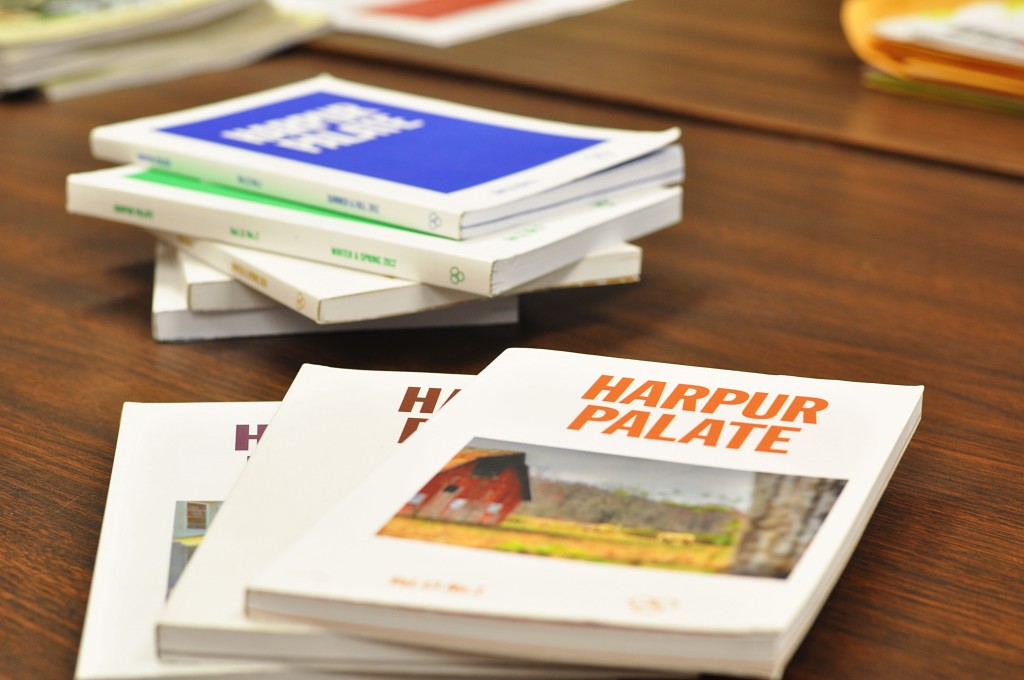
Two horses, a wilting tree and a pueblo house lie beneath a lone cloud in the middle of nowhere. The cover art of Harpur Palate’s summer and fall edition sparks curiosity, and you can’t help but feel that there’s a story somewhere in that desert.
As it turns out, Harpur Palate doesn’t have just one story; there are plenty of works of poetry, fiction and creative nonfiction beneath the cover of the biannual literary journal. Published by the English department and run by graduate students, Harpur Palate is largely off the undergraduate radar. Its national reputation, however, is not so low-key.
Founded in part by doctoral graduate Toiya Kristen Finley in 2001, Harpur Palate has prospered as a volunteer-based publication, relying on the efforts of graduate students and a small group of undergraduate interns to sift through hundreds of submissions each reading period. When it started, the journal tended to publish writers affiliated with Binghamton University, but it has since grown and now only considers the work of those independent of the college.
“We get submissions from all over the U.S.,” said Dante Distefano, one of three Harpur Palate poetry editors. “We’ve even received work from a number of other countries, from both emerging and established poets.”
These writers are professors, students and award winners who are residents of Washington, West Virginia, Mississippi and more. Some talk about the highly esteemed publications they’ve worked with, while others talk about how odd jobs, such as DJing in a strip club, have afforded them the opportunity to pursue their dreams. At the end of the day, Harpur Palate looks for quality content, and they recognize that it can come from anywhere.
“There have been submissions that are from elderly poets and once and a while from high school students,” Distefano said. “Especially for an up-and-coming writer, to be published by the journal would be a pretty great achievement.”
According to Distefano, working for a literary journal can be helpful to aspiring writers, because it provides an inside look at its operation and an opportunity to gauge your own work in comparison to those that get published, a great learning experience for English students.
“When you’re reading a lot of submissions, you notice the things that reappear 100 times,” said Jason Allen, Harpur Palate’s co-editor-in-chief. “You become aware of the things you like and don’t like. I look for writing that has a strong voice, and I want that in my own work as well.”
Along with publication, there are three annual prizes that authors have the chance to win. When entering their work, participants pay a small fee and have the opportunity to win a sizable cash prize should they receive the award. Out of the three prizes, two are dedicated in honor of former BU English professors, Milton Kessler and John Gardner. Both established writers — Kessler a poet, and Gardner a novelist and literary critic — the two contributed a great deal to the University’s creative writing program. The award winners are granted a special section in the next issue, and their winning piece is highlighted on the Harpur Palate website.
Although students and other affiliates of BU cannot be published in the journal, Harpur Palate is not something to be ignored; it is a respected platform by which the University engages with a larger academic community. Each edition of the publication is unique, from the colorful covers to the pieces that have been carefully curated. For English students, the journal emphasizes writing as a craft, and that success in the creative field is based on the effort you put in. Quality writing can come in many different forms and is usually preceded by dozens of rejection letters, but the pages beneath the painting of that pueblo house are proof that recognition is possible.


